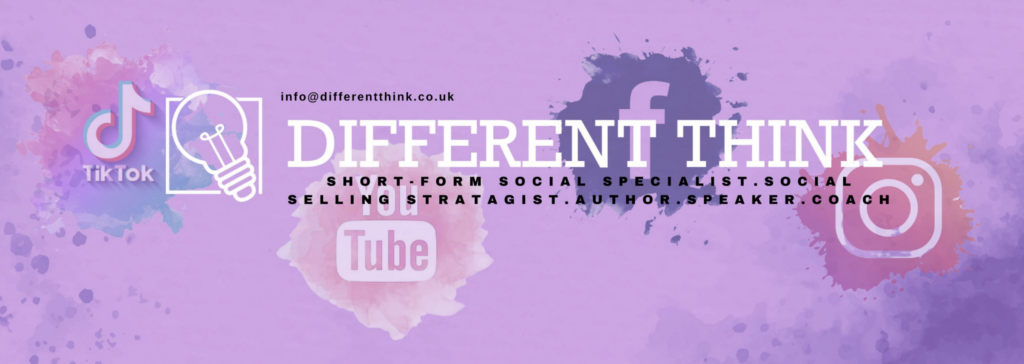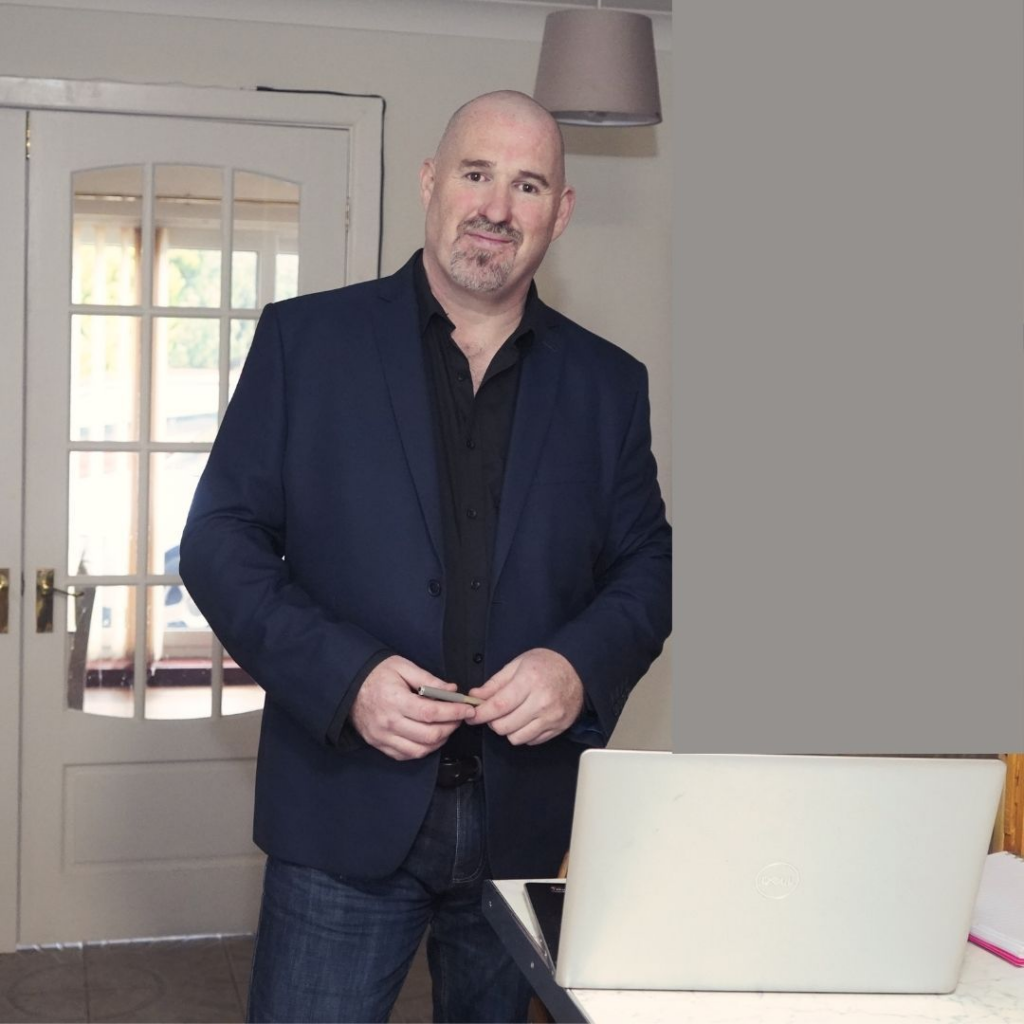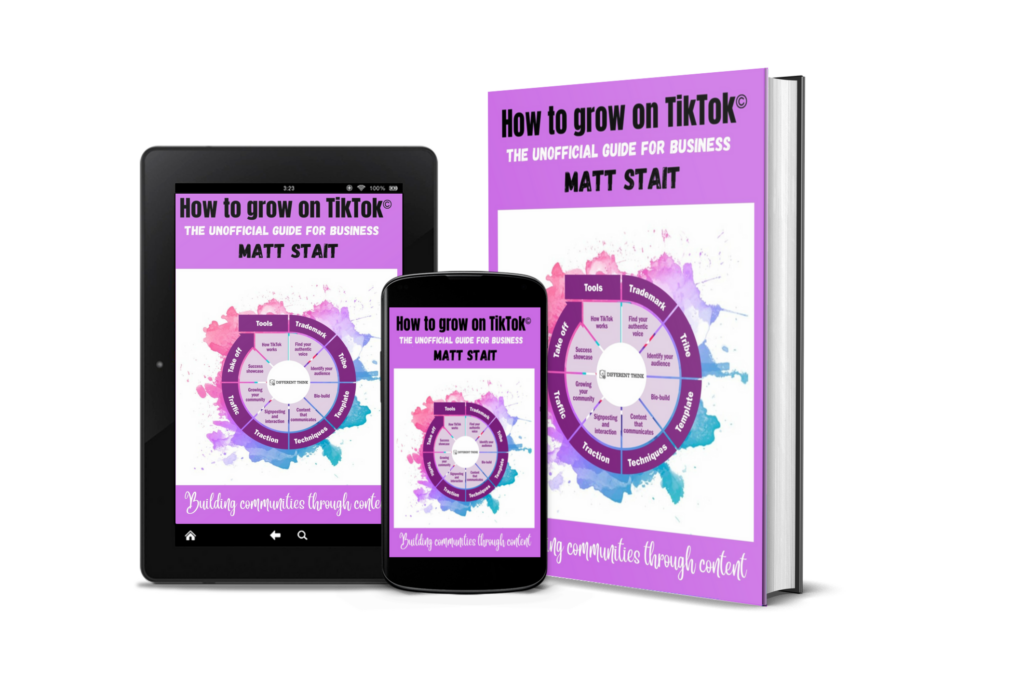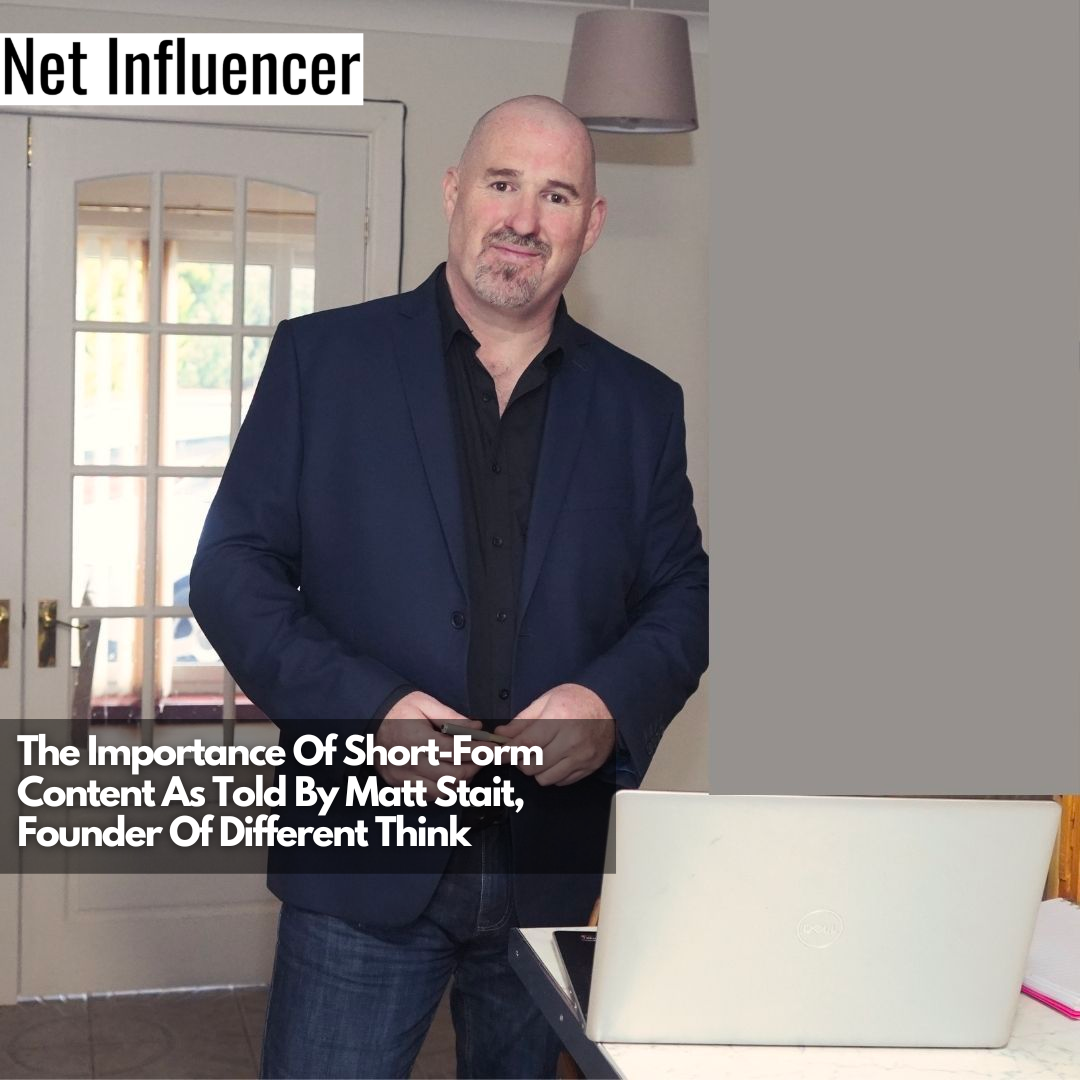Agency
The Importance Of Short-Form Content As Told By Matt Stait, Founder Of Different Think
After realizing how challenging it is to find experts on short-form content, Matt Stait launched Different Think. Through his business, he has helped countless businesses and creators by harnessing the power of short-form content. Today, he shares his entrepreneurial journey with us and how he sees short-form content will change the business landscape.
After realizing how challenging it is to find experts on short-form content, Matt Stait launched Different Think. Through his business, he has helped countless businesses and creators by harnessing the power of short-form content. Today, he shares his entrepreneurial journey with us and how he sees short-form content will change the business landscape.

Who is Matt Stait?
Matt Stait started Different Think LTD after leaving his martial arts gym business. He launched his business after realizing that there aren’t too many marketers and trainers who are specifically skilled and experienced in short-form content. He learned the ins and outs of the industry and now helps his clients through short-form content.

“Essentially, Different Think was something born of necessity. I started a martial arts gym business about 13 years ago. I left my management position to invest my savings into this. And I suddenly had to learn how to do all the accounting and marketing — and I had to wear several different hats.”
How Different Think Approaches Short-Form Content
Different Think uses different kinds of mediums for its company itself and the clients they work with. But of all those mediums, Matt believes that short-form video content is the most effective. He says, “One thing I find really powerful at the moment is short-form video content, like TikTok, Facebook reels, and YouTube shorts. I push heavily towards that because it’s a natural place to grow organic content.”
Surveys back up Matt’s take on short-form video content. According to HubSpot’s 2023 Social Media Marketing Report, short-form video has the highest ROI of all social media marketing strategies. No wonder why 51% of marketers who use short-form video content plan on increasing their investment in the coming years.
What Are the Benefits of Short-Form Video Content?
Short-form video content offers tons of benefits to businesses and creators. Matt gives us a rundown on these benefits, starting with the fact that the popularity of short-form content will increase rapidly by the end of 2023.
“It’s such a powerful tool because most of the content now on the internet is short-form content. So, 90%, they suggest, by the end of 2023, is going to be short-form content. That’s an awful lot of conversations business owners will miss out on if they don’t use short-form content.”
There’s also a low barrier to entry when it comes to short-form content, as well. Matt adds, “If you have a basic mobile phone and an internet signal, then you can compete in that marketplace; you can get involved.”
Matt also recognizes how people nowadays don’t have the luxury of time. And because short-form content is “short” by nature, they can do a lot with it without spending a lot of time.
He explains further, “And the very nature of the fact that’s short form means we can do it quickly, we can get it out quickly, we can build quite a good library of content in a very short span of time because we don’t have to spend a great deal of effort and energy on making these really long-form pieces of work.”
The Best Platforms for Short-Form Content
Of all the platforms available for businesses and creators today, for Matt, TikTok is definitely the most in-demand and is currently “the big one.” TikTok took this and ran with it [short-form video content]. And while the platform is only a few years old, it has grown quickly.
The rate of TikTok’s growth is too fast that it forced other platforms to adopt what TikTok is doing. Matt says, “It’s grown so much that it’s forced other platforms to create their own versions of TikTok. Now we have Facebook reels, Instagram reels, and YouTube shorts.”
While all of these platforms are great for putting out content, TikTok is still streets ahead in terms of editing and monetization options.
Matt continues, “But essentially, all of them are really good because they’re all desperately trying to get your attention, your content, and watch time. As long as you’re producing stuff that gives value, they’ll share it organically.”
How Short-Form Content Impacts Audience Engagement and Retention on Social Media
There are different outcomes depending on how businesses and creators are going to use short-form content. For instance, for creators using short-form content to build communities, sell directly, or build an authority position in an industry, short-form content will bring different results.
But Matt adds that anyone can use short-form content to achieve any outcome. He adds, “It’s an excellent way to grow following, grow communities, and get activities on pages.”
For business owners with Facebook pages that don’t generate a lot of interaction, Facebook reels are a fantastic way to ensure that the page is visible to more people. They can also use YouTube shorts to help their longer-form content get seen. The more visible a business is online, the easier it’ll be for them to convince its audience to trust its brand.
Matt adds, “If I appear in front of your device several times and you like what I’m doing over those several times, you’re far more likely to engage with my longer form stuff. So it’s a really good opportunity.”
Creating Effective Short-Form Content
Short-form content might be short, but many things must be considered to guarantee its effectiveness. But to make things as simple as possible, Matt suggests always starting with a powerful hook. He adds, “That’s something that’s going to get their attention and stop them from scrolling.”
Second, Matt advises anyone who wants to make effective short-form content to commit. He explains, “If you’re going to make a promise at the beginning, make sure that you can actually fulfill that provide and give readers the value by the end of the article.”
Next, the content should end with a call to action — whether that’s “follow for more videos,” “click this link,” or “join the community.” A solid CTA is crucial because it increases the amount of time the audience engages with a business or creator. In fact, Matt recommends treating their audience as if they were two-year-olds. He explains further by telling us:

“What I mean by that is, if I’ve got a toddler, I’d say to them, ‘Okay, ten more minutes of television, and then we’re going to have a bath, and then it’s time for bed.’ And then it’s five more minutes, and then come bath time now, and then we’ve got a bed. And so I let them know all the way along what’s expected of them.”
A strong CTA enables businesses and creators to follow the same premise — when their audience knows what’s expected of them, they’ll continue to stay through the journey. CTAs basically make it easier for their audience to know what their next steps are.
Common Mistakes Businesses and Creators Commit When Creating Short-Form Content
The length of short-form content doesn’t immune businesses or creators from committing mistakes when making it. One of the most common mistakes Matt sees is people using short-form content as a way to sell directly, especially when someone from the older generation crafts the content.
“They think about it as an advertisement; they think about selling directly into the space. They should be looking to use content to build relationships and communities and then look to sell further down the line.”
Another mistake Matt notices is how businesses and creators use short-form content to show off. He explains, “Now my obvious question is the same as everyone else’s obvious question, ‘what can you do for me?’ and that’s really what I need to know the answer to.”
Matt advises that anyone looking to use short-form content should refrain from using it to show off themselves and their capabilities. It might have taken a very long time to achieve those skills, but businesses and creators should think about what helps their audience.
The third mistake Matt points out is people rushing out. Many are making content without any idea what they want to say, what they want to do, and what they want that content to achieve. For Matt, “That’s a very genuine mistake many people make.”
Online platforms actually analyze what people are doing and will pigeonhole them accordingly. This means that if businesses create content that isn’t very good or in several different niches, jumping from one thing to another, platforms will not trust them.
Matt suggests that before doing anything involving the camera, sit down and work out some strategies or ideas that you want to present and how you want to represent yourself. Look at what other people in a specific niche are doing. Pay attention to content creators and what they’re doing well and what’s gaining traction.
Matt advises his clients to do the same. He says, “I get them to do the homework portion first and then work out a bit of a strategy, then start producing some content. So again, I would recommend that people have a little bit of content backed up so they don’t fall into the trap of suddenly freaking out because they haven’t posted anything today.”
Matt also sees businesses and creators having issues with consistency, particularly in posting content and interacting with the audience. He adds, “You have to make sure you are talking to your communities. If they take the time to answer your content or like it, leave a comment.”
How Different Think Supports Creators to Grow Their Audiences and Businesses
What Different Think does is to help creators get past the feeling of overwhelm and get them to start making content. The company also encourages clients to have accountability. Matt says, “I help them to make sure that they implement the things that need implementing in the other that they need implementing.”
Matt shares that Different Think helps creators with different kinds of strategies, including branding and marketing. The company also lends a helping hand to creators in terms of monetizing their content and turning them into working funnels and pipelines to build communities.
Matt stresses the importance of building those communities saying, “And so fundamentally, none of it works without the community aspect. Building those communities means having people to talk to, having people to engage with, and having a group of individuals who then become the hive mind. I mean, that’s vital to our success.”
Success Stories From Different Think’s Clients
Different Think has had several clients ever since it launched and how the company helped them succeed, particularly in TikTok. He shares, “When it’s done well, and when it’s set out properly, it could bring back results quite quickly.”
He continues to share about this guy who worked with Different Think for a while. He was exceptionally good but started with zero followers. After working with Matt, he gained 50,000 followers and started doing live online. Matt recalls, “I remember him messaging me saying, ‘I can’t believe it. I just had over 10,000 people in one of my lives.'”
This client was selling a product, and at the time, his sales jumped by a good 20%.
Matt shares another story with another client. This happened before the lockdown, and the client was struggling really hard with the fact that everything in the UK was closed, and he wasn’t allowed to do anything physical for quite some time. Different Think helped this client use TikTok to make sales and create opportunities where he can make an income.
Matt proudly shares, “By the end of the lockdown, which went on for about a year, the client doubled his original income. He didn’t have to return to his actual job at all at the end.”
Different Think has gained plenty of success stories, which can be found on social media. Most of Matt’s clients’ successes aren’t always big and grandiose; these stories highlight people who successfully managed a situation where they were more comfortable than they were better.
Because of Different Think, these people got a better life balance and can make choices based more on what they want to do instead of making decisions based solely on financial needs.
Matt ends his answer to this question by telling us, “That’s really where a lot of success is — it’s helping people create another income stream and another way to get themselves out there and do what they love.”
Different Think’s Target Audience
Different Think often collaborates with people over 30 because they’re usually unsure of what they need to do but know they need to do something. Different Think also works with people who have stayed in the background for as long as they possibly can but are now seeing competitors succeeding in their niches.
But Matt has his own way of doing things. He makes it very plain and simple to people who come towards him and ask for his help. He says, “If you want instant success, I’m not the person for you. If you’re not going to put the work in, I’m not the person for you.”
Matt advises his clients that if they see this as creating a completely free and easy way of making money, he’s not the right person for the job. Because although it’s possible for people to reach a certain point that doesn’t take a great deal of work, short-form content does take a lot of work to build.
“That’s really fundamentally where I’m at with that. And so I say to people, ‘you need to make sure that you understand it, say a minimum of three to six months of time investment.’ And I don’t mean like full-time, but you need to make sure it’s committed to that.”
Matt is also very upfront with all of his clients, telling them there will be costs. He adds, “Whatever you do in life is going to cost you something, whether its time, money, or both, and I have to make sure you’re aware of that. So, a little bit of investment is required financially.”
Matt also loves working with clients who understand that they need to do the content itself and allocate the time to do that; those who are willing to do the work and are excited to be involved in it.
Matt says that he’s currently at an age where he’s no longer interested in things that he doesn’t want to do or people he doesn’t want to work with. He explains, “I need that person to be excited about the journey; I need that person to want to be involved.”
How Matt Measures Success
As to the metrics Matt uses to measure success, it all depends on what people are asking and what it is they want to do. For example, suppose a client wants to gain recognition as an expert in their space. In that case, the ROI could be the number of people approaching that client for podcast interviews, blog writing articles, or speaking from stage opportunities.
For other people who sell products or services, their success will be measured by the number of people who paid for their products or engaged with their services.
Matt cites an example from someone he used to work with. He says, “All they wanted to do was grow their YouTube channel. And so, we used short-form content in TikTok and Facebook reels to do exactly that. The ROI on that was they managed to get to the point where they could monetize their YouTube channel. They were very happy with that and what was the goal in itself.”
What Sets Different Think Apart from Other Similar Platforms
Matt is proud to share that the way he does things and what he does set Different Think apart from its competitors. He adds, “The system that I use and developed is based around what you can do for your communities, as opposed to hitching onto viral videos and trends, which invariably don’t work in the long term because they just attract fickle people who are more interested in that trend or sound.”
Advice for Anyone Interested in Using Short-Form Content
Matt highlights the importance of researching before making and using short-form content. He adds, “Make sure that that’s done because that’s one of the critical components and can make a real difference in the longer term.”
Second, Matt encourages aspiring short-form content creators to enjoy the process. He continues, “I see too many people getting really fixated on the follower number, and that doesn’t really matter as much as the interaction value. I know people with a million followers who don’t make any money from this. I know other people with a thousand followers that make a pretty successful income.”
It’s all about the quality of the follow count than it is about the number of the following counts. Mike says that succeeding in this space is all about getting the right people into a community and making sure that creators enjoy the journey. “Just enjoy the experiments, enjoy the fun of it, and enjoy being right at the cutting edge of what we can do with social media at this point in time.”
How Short-Form Content Will Evolve in the Future
Although short-form content is taking over the business landscape today, Matt is confident that there is still a place for longer-form content, either online or offline in the future.
“I think we’re all moving more towards this short-form kind of context as an initial introduction type of content. I’m not suggesting that the Joe Rogans of the world are going to go away because they’re not. There’s always a place for those three-hour conversations and longer form stuff. What I’m saying is as an introduction, as a way in, as a day-to-day, short form is definitely taking the lead with that.”
Matt also expects the way people do business will evolve in the next couple of years. He adds, “We seem to be moving into a more global society overall, and we are not constricted by location necessarily as much as we are. There’s a lot more traveling and independence. When we look at the digital currencies and things that are out in the world now, there’s a lot more of that sort of thing, and the use of physical cash is becoming less and less.”
Because of the internet, Matt expects businesses to be able to sell regardless of their location. He says, “As long as you have an internet signal where you are in the world, and you like what I do, you can buy from me. And I think that’s amazing.”





















